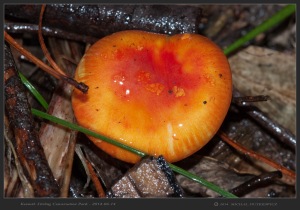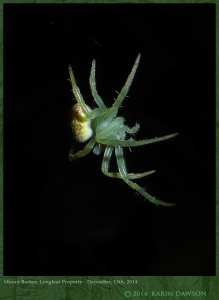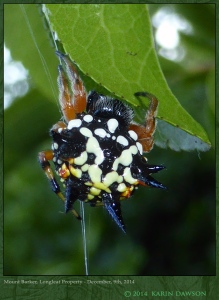



Amanita xanthocephala aka Pretty Grisette, Vermillion Amanita, Vermillion Grisette, Amanitopsis pulchella
Kingdom: Fungi
Phylum/Division: Basidiomycota
Class: Agaricomycetes
Order: Agaricales
Family: Amanitaceae
Wottons Scrub, Kenneth Stirling Conservation Park, South Australia – June 14th, 2014 – soggy, wet, cool conditions
Photos & Text: Michal Dutkiewicz
Although poisonous, and closely related to the introduced species Amanita muscaria, this pretty, indigenous fungus emerges from the floor of Eucalypt forests like a sphere of yellow gelati while still covered in the juvenile down so characteristic of the family – This species has an ectomycorrhizal relationship with Eucalyptus. It occurs in south-west Western Australia, and in the forests of South Australia and around up into southern Queensland.
There is some radial grooving on the cap and that and its tendency to smaller size helps distinguish it from the introduced species Amanita muscaria . It is quite common and may occur singly or in groups, although I have only seen it singly.
http://en.wikipedia.org/wiki/Amanita_xanthocephala
http://fungimap.org.au/index.php/fduonline-home/22/294/agarics/P-amanita-xanthocephala


















